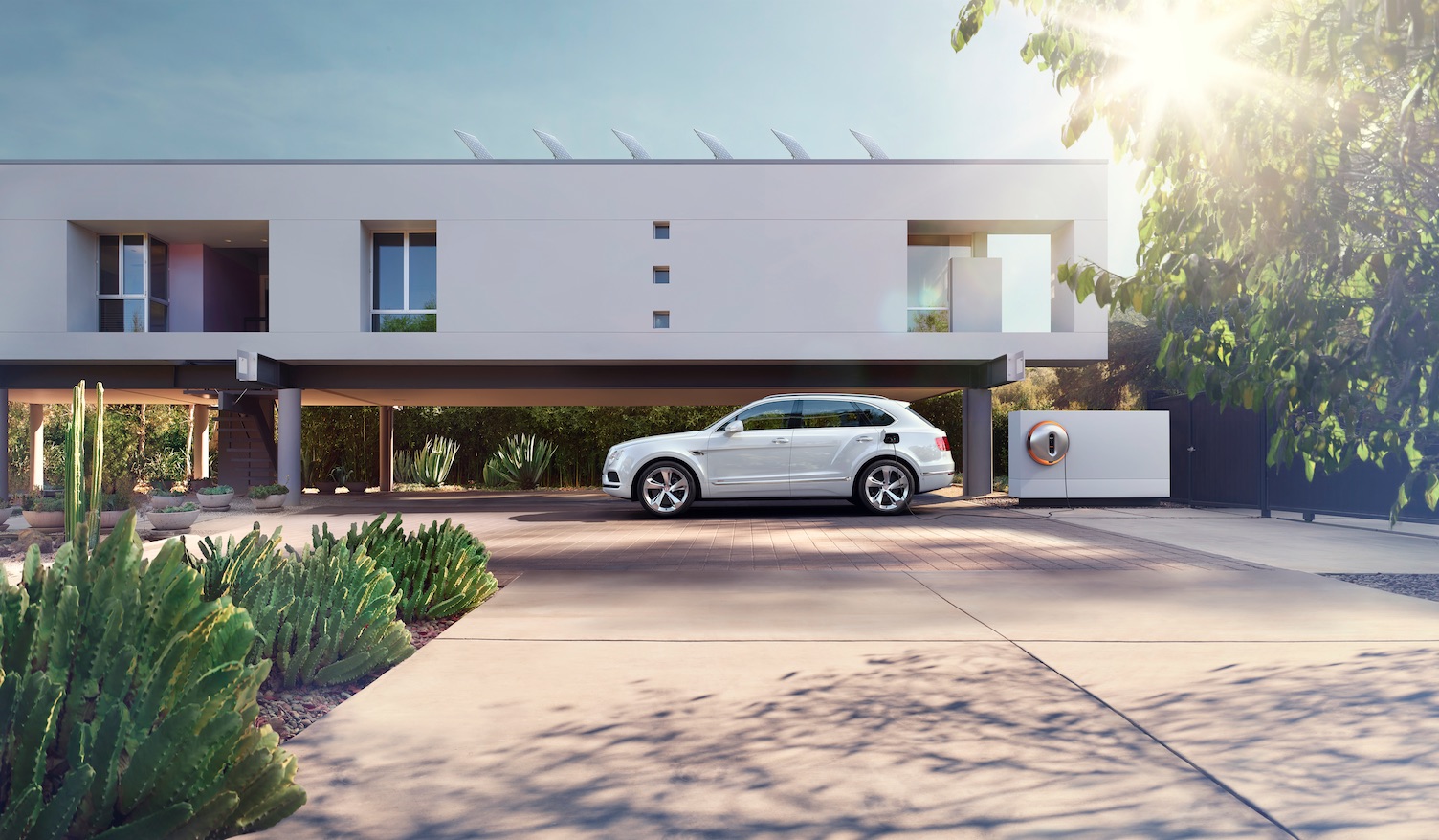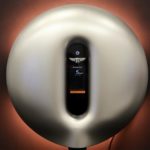
Teaming up with world-renowned artist Philippe Starck, Bentley has unveiled conceptual images of a home charging station for the Bentayga plug-in hybrid. Designed to keep charging cables neat and safe at home while blending sophistication with utility, the “Bentley by Starck Power Dock” is intended to encourage Bentayga Hybrid customers to ensure each journey begins with the maximum electric-only range by not missing an opportunity to plug in.
While not difficult, plugging in a vehicle is hardly what most people would consider stimulating or glamorous. And while drivers of fully-electric vehicles need no coaxing to plug in their vehicles, charging is optional for plug-in hybrids. But if customers forgo charging, they will be missing a great benefit of electrified transportation. Bentley and Starck recognize that making the task of charging enjoyable and rewarding will enhance the overall experience of driving an electric vehicle.
“As always with my designs I wanted the maximum of intelligence with the minimum of materiality. I wanted it to be a modern art piece: durable, real and avant-garde high tech. It was also important for me that the unit was as sustainable as possible,” explained Starck. In addition to Starck’s home charging station, Bentley equips each Bentayga with bespoke bags containing charging cords for use when away from home.
Starck, who happens to be a Bentley customer, describes his connection with the vehicles not as about design or horsepower, but as “a mental and sentimental relationship.” It is just this sort of emotion that draws many customers to electric vehicles today. Extending this aura to charging will increase the likelihood that customers will take an extra few seconds to plug in their vehicles and maximize the opportunity to drive with zero tailpipe emissions.
Bentayga Highlights
The plug-in hybrid Bentayga, which will be available for ordering in select markets in the second half of 2018, will have an all-electric range of about 31 miles. Level 2 charging will take 2.5 hours (from fully empty), while charging on a household outlet will take about 7.5 hours.
To maximize fuel efficiency (whether electric or gasoline), the vehicle uses satellite navigation information to determine when and where to use the battery-powered electric motor versus the internal combustion engine. When the driver programs in the trip’s destination, the navigation system will dynamically calculate the most efficient route and use of gas and electricity, with the goal of maximizing electricity. For example, if the vehicle determines that the beginning of a journey will be on the highway but the end will be on local or urban roads (whose slower speeds and denser development are well-suited for electric drive), the computer will reserve battery energy for the end. In every case, the system is designed to maximize overall efficiency by reducing on-board charge to zero just as the vehicle reaches its destination.
For more information about the issues discussed above, as well as many other electric vehicle and clean transportation opportunities, please contact me via my website or LinkedIn. I also invite you to subscribe to receive future posts via email, view my other posts, and follow me on Twitter.






